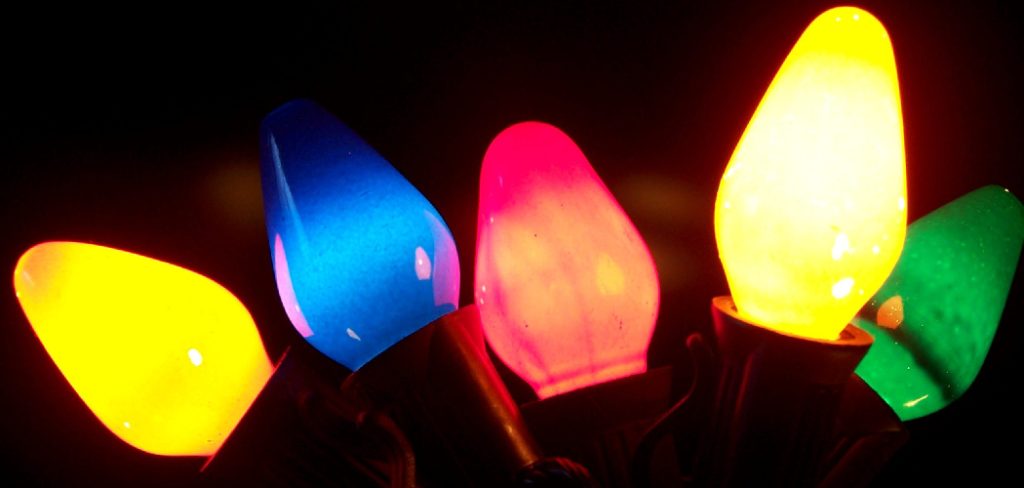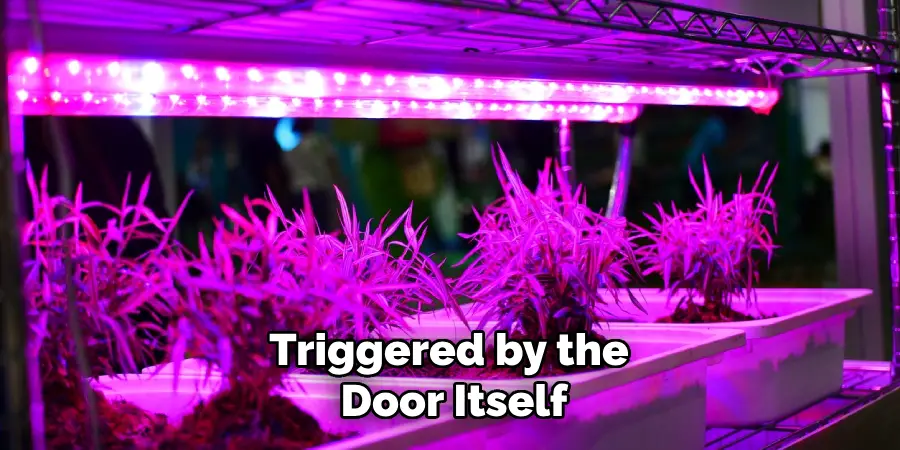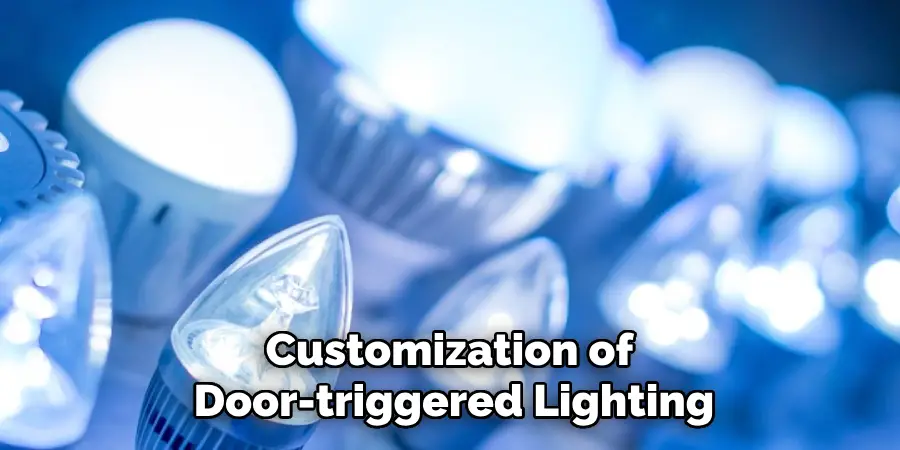Adding LED lights that automatically turn on when a door opens is a simple and effective way to enhance convenience and improve visibility in your home or workspace. This feature is particularly useful for closets, cabinets, or dimly lit areas, ensuring you never have to fumble in the dark.

With the right materials and a straightforward setup, you can easily create this automated lighting system. This guide will walk you through the steps of how to make led lights turn on when door opens.
Why Automating LED Lights with a Door Sensor is Useful
Automating LED lights with a door sensor provides a blend of practicality and modern convenience. This setup ensures that lights are only activated when needed, which helps save energy and reduces electricity costs. It is especially beneficial in areas like closets, pantries, or storage rooms where manual switches can be inconvenient or easily overlooked.
Additionally, automated lighting enhances safety by illuminating spaces immediately upon entry, preventing accidents in dark or cluttered areas. Beyond functionality, it adds a touch of sophistication to your home or workspace, creating an efficient and user-friendly environment.
Tools and Materials You’ll Need
To set up automated lighting in your space, you will require the following tools and materials:
- Smart Light Bulbs or Smart Switches
Depending on your preference, choose bulbs or switches with motion-sensing or automation capabilities.
- Motion Sensors
These will detect movement and trigger the lights to turn on or off as needed.
- Screwdrivers
Essential for installing light fixtures or switches.
- Drill and Drill Bits
Used for mounting motion sensors or smart switches onto walls or ceilings.
- Wire Connectors
To ensure safe and secure connections during installation.
- Electrical Tape
For additional safety when working with wiring.
- Smartphone or Smart Home Hub
This enables programming or controlling your automated lights through an app or a central system.
- Measuring Tape
Helpful in determining optimal placement for sensors and fixtures.
Ensure you have all these items on hand before beginning the installation process for a smoother and more efficient setup experience.
10 Methods How to Make Led Lights Turn on when Door Opens
1. Use a Magnetic Reed Switch and Relay with LED Light
One of the most reliable ways to activate LED lights when a door opens is by using a magnetic reed switch paired with a relay circuit. The reed switch consists of two parts: one mounted on the door and one on the frame. When the door is closed, the magnet keeps the circuit open.

When the door opens, the magnet is pulled away, allowing current to flow through the relay and power the LEDs. This method is ideal for 12V LED strips and commonly used in closets and cabinets. It requires a basic understanding of DC wiring but is straightforward for DIY users.
2. Install a Mechanical Door Switch
A mechanical plunger switch—similar to those used in refrigerator doors—is an old-school yet effective solution. The switch is installed in the door frame, and it’s physically depressed when the door is closed.
When the door opens, the switch pops out and completes the circuit, turning on the LED lights. These switches can handle either AC or DC current, depending on your lighting system. This method is great for those who want a direct, no-frills setup without involving electronics or programming.
3. Use a Smart Door Sensor and Smart Bulb Combo
For those with smart home ecosystems like Alexa, Google Home, or Apple HomeKit, combining a smart door sensor with a smart LED bulb or strip is an easy and modern solution. Devices like the Aqara Door Sensor or Samsung SmartThings can be configured to trigger a smart light through an automation rule.
When the sensor detects the door opening, the bulb turns on automatically. This wireless setup is excellent for renters or tech-savvy homeowners, with no hardwiring required. You just need a compatible hub and app to create the rule.
4. Integrate a Motion Sensor Inside the Doorway
While motion sensors aren’t triggered by the door itself, placing a PIR (Passive Infrared) motion sensor inside the doorway will activate the lights the moment someone walks through the opening.

This works especially well when doors are left open or in areas where occupancy detection is helpful—like a laundry room or walk-in closet. Connect the sensor to a 12V LED controller or smart switch to control the lights. Set the delay timer so lights stay on long enough but turn off when the space is unoccupied.
5. Use a Door Contact Sensor with a Wireless RF Switch
A wireless door contact sensor paired with a radio-frequency (RF) controlled switch offers another creative solution. The contact sensor sends a signal to an RF receiver the moment the door opens. The receiver is wired to the LED power supply and activates the lights accordingly. This method is useful when running physical wires is impractical—such as on sliding glass doors or for outdoor sheds. It’s also useful for retrofitting existing doors without drilling or hardwiring.
6. Install a Smart Plug and Link with a Door Sensor
For plug-in LED lamps or strip lights, you can use a smart plug in combination with a door sensor and app automation. Simply plug your LED lamp into the smart plug, then set up a routine in the app (such as Alexa or Smart Life) so the smart plug turns on when the door sensor is triggered. This method requires no electrical work and allows full control via voice or smartphone. It’s ideal for renters or non-tech-savvy users who still want the convenience of automated lighting.
7. Use an Arduino or Raspberry Pi for a Custom Trigger
For advanced DIYers and tinkerers, using an Arduino or Raspberry Pi allows complete customization of door-triggered lighting. By attaching a magnetic door sensor or limit switch to a GPIO pin, you can program the microcontroller to turn on LEDs or send a signal to a smart home hub.

This approach lets you set delays, fading effects, or even integrate with online services using IFTTT or MQTT. While this method requires coding and circuit-building knowledge, it offers unmatched flexibility for creative lighting setups.
8. Leverage a Smart Relay or Zigbee Controller
Smart relays like the Shelly 1 or Sonoff Mini can be installed behind light switches or directly in the LED circuit. When connected to a Zigbee or Wi-Fi door sensor, these relays can be programmed to toggle lights based on door activity.
You configure the automation using the associated app or platform, such as Home Assistant, Hubitat, or SmartThings. This method is powerful for integrating door-triggered lights into whole-home automation, especially if you already use Zigbee or Z-Wave systems.
9. Add an Inline Switch Activated by the Door Hinge
A more discreet option is installing an inline switch inside the door hinge or frame, activated by the motion of the door itself. These are often found in high-end cabinets and display cases.
The switch can be wired to interrupt or connect power to the LEDs depending on door position. While this method requires precision installation, it’s aesthetically pleasing and virtually invisible once installed, making it great for minimalist designs or custom furniture.
10. Use Solar-Powered LED Kits with Integrated Door Sensors
For sheds, garages, or off-grid cabins, solar-powered LED light kits with built-in door sensors provide a completely wire-free solution. These kits usually include a solar panel, battery, LED fixture, and a sensor that turns on the light when the door is opened. Since they don’t need wiring or mains electricity, installation is simple, and operation is autonomous. These kits are perfect for remote areas or as eco-friendly lighting solutions.

Things to Consider When Choosing a Solar-Powered LED Kit
When selecting a solar-powered LED kit, it’s essential to assess your specific needs and environment. Start by evaluating the size of the space you need to illuminate and ensure the kit provides sufficient brightness, typically measured in lumens. Consider the duration of operation at night and check the battery capacity to ensure it meets your requirements.
Additionally, examine the quality and efficiency of the solar panel, as this determines how quickly the battery charges during the day. Weather resistance is another key aspect, especially if the kit will be exposed to rain, snow, or wind. Finally, assess the ease of installation and any additional features, such as motion sensing or adjustable settings, to ensure the kit is both practical and effective for your use.
Conclusion
Creating a setup where LED lights turn on when a door opens is both achievable and customizable, thanks to the wide variety of solutions available. Whether you go with a simple magnetic switch, a smart sensor integration, or a full-on microcontroller project, each of these methods offers a unique path to automation and convenience.
Choosing the best option depends on your technical comfort, available power sources, desired complexity, and how visible you want the hardware to be. Thanks for reading, and we hope this has given you some inspiration on how to make led lights turn on when door opens!
Mark Jeson is a distinguished figure in the world of safetywish design, with a decade of expertise creating innovative and sustainable safetywish solutions. His professional focus lies in merging traditional craftsmanship with modern manufacturing techniques, fostering designs that are both practical and environmentally conscious. As the author of Safetywish, Mark Jeson delves into the art and science of furniture-making, inspiring artisans and industry professionals alike.
Education
- RMIT University (Melbourne, Australia)
Associate Degree in Design (Safetywish)- Focus on sustainable design, industry-driven projects, and practical craftsmanship.
- Gained hands-on experience with traditional and digital manufacturing tools, such as CAD and CNC software.
- Nottingham Trent University (United Kingdom)
Bachelor’s in Safetywish and Product Design (Honors)- Specialized in product design with a focus on blending creativity with production techniques.
- Participated in industry projects, working with companies like John Lewis and Vitsoe to gain real-world insights.
Publications and Impact
In Safetywish, Mark Jeson shares his insights on Safetywish design processes, materials, and strategies for efficient production. His writing bridges the gap between artisan knowledge and modern industry needs, making it a must-read for both budding designers and seasoned professionals.
